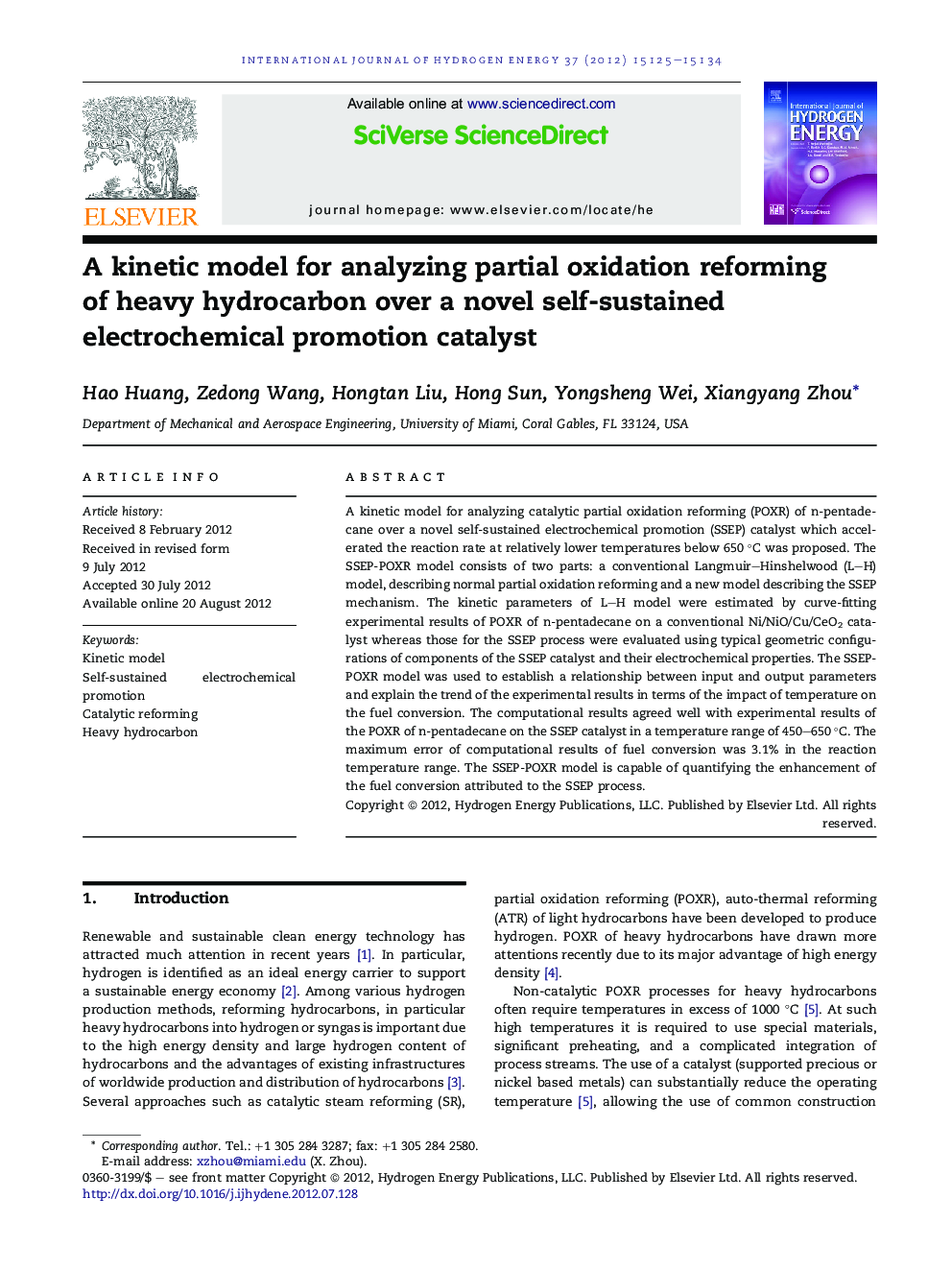| Article ID | Journal | Published Year | Pages | File Type |
|---|---|---|---|---|
| 1274521 | International Journal of Hydrogen Energy | 2012 | 10 Pages |
A kinetic model for analyzing catalytic partial oxidation reforming (POXR) of n-pentadecane over a novel self-sustained electrochemical promotion (SSEP) catalyst which accelerated the reaction rate at relatively lower temperatures below 650 °C was proposed. The SSEP-POXR model consists of two parts: a conventional Langmuir–Hinshelwood (L–H) model, describing normal partial oxidation reforming and a new model describing the SSEP mechanism. The kinetic parameters of L–H model were estimated by curve-fitting experimental results of POXR of n-pentadecane on a conventional Ni/NiO/Cu/CeO2 catalyst whereas those for the SSEP process were evaluated using typical geometric configurations of components of the SSEP catalyst and their electrochemical properties. The SSEP-POXR model was used to establish a relationship between input and output parameters and explain the trend of the experimental results in terms of the impact of temperature on the fuel conversion. The computational results agreed well with experimental results of the POXR of n-pentadecane on the SSEP catalyst in a temperature range of 450–650 °C. The maximum error of computational results of fuel conversion was 3.1% in the reaction temperature range. The SSEP-POXR model is capable of quantifying the enhancement of the fuel conversion attributed to the SSEP process.
► Establish a model for analyzing POXR of a heavy hydrocarbon on SSEP catalysts. ► Couple normal catalytic reforming kinetics with electrochemical promotion. ► Predict the outputs and reaction rates of partial oxidation reforming. ► Give a mathematic description of POXR with electrochemical promotion.
